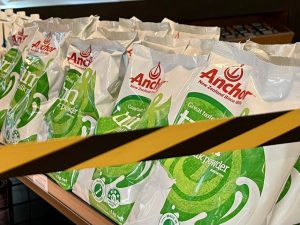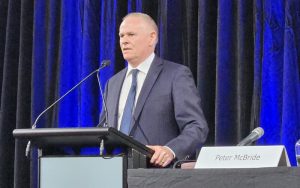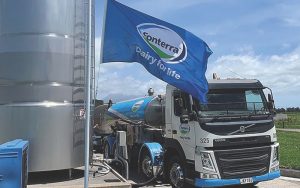
Farmers are not rejoicing.
Just as New Zealanders are grappling with a cost-of-living crisis, farmers are coming to terms with what is rapidly becoming a cost-of-farming crisis.
The full effects of the increased cost of doing business won’t become fully apparent until the new season starts in June, with the blow being somewhat softened at the start of this current season due to many prices locked in with contracts.
Fertiliser prices have tripled, with urea starting the season at $400 a tonne and rapidly climbing to $1200, while feed costs have increased by 50% and the soaring price of diesel has seen price increases along every step of the delivery chain.
Rising interest rates, while widely predicted, are another unwelcome drain felt by both households and businesses alike, though it must be noted dairy farmers have been paying off debt at a record rate while the payout has been high and costs stable.
Compliance costs continue to increase: farm environment plan audits are not free, and neither is water metering or soil moisture monitoring.
We have already seen land use move away from dairying to horticulture, in part due to stricter government regulations. One farm alone in Murchison that was producing a million kilograms of milk solids per year is now growing hops instead, and others are following suit.
Compounding all this is the staff shortage caused by border closures and the Government’s increasingly strict stance on immigrant labour. Farmers have often been accused of importing cheap foreign workers, but the truth is that, with few exceptions, those workers were well paid at the time.
Imported labourers didn’t keep wages low by working for less, they simply ensured the supply of workers was greater than the number of jobs available and the market found its equilibrium. Now, with the supply choked off for nearly two years and unemployment at a near-record low, a new equilibrium is being found.

The Government is slowly turning the labour tap back on, with 500 agriculture workers allowed into New Zealand in time for calving but, with their minimum hourly rate now pegged at $28, a new and higher floor has been set for farmworkers’ wages.
Since the farmgate milk price is set by overseas buyers purchasing commodities at auction, New Zealand dairy farmers are price takers, with no means of passing increased costs on to consumers. The only aspects a dairy farmer has any control over is their level of production and their input costs.
My costs for this season are up 13% on what I budgeted, and next season my cost to produce a kilogram of milk solids will be 23% higher than my baseline average. Something has to give, and farmers will be looking hard at their business for places to reduce costs.
There is no doubt dairy farming has become easier in the past couple of decades. When I started out farming, the staffing levels were one person for every 200 cows, I had two days off per calendar month and working 60-70 hours per week was the norm.
DairyNZ data shows that in Canterbury the average staffing rate is now one person per 167 cows and the latest Federated Farmers remuneration survey put the average dairy worker’s hours at 47 per week. Better rosters also mean many farmhands are having much more rostered time off – as they should.

With labour being scarce and getting more expensive, and other costs rising at an alarming rate, many farmers are looking to labour-saving technology to future-proof their business and reduce costs.
I know of 12 farms in Mid Canterbury installing cup removers this season, including myself, and talking to the installers there are many more in the region going down the same path. This is old technology that potentially turns milking from a two-person job to a one-person task. Add in cow collars and an automatic drafting gate and suddenly the capital investment is quickly being paid for by a $65,000 reduction in the annual wages bill.
Should you want to include in-shed feeding in the upgrade, the cost saving in diesel to run the tractor for feeding out will quickly add up, as will the reduction in feed wastage.
I have long resisted technology like this, not because I’m a Luddite but because I have always tried to view staff as an asset rather than a cost. That view might just become one more luxury I can no longer afford.






















